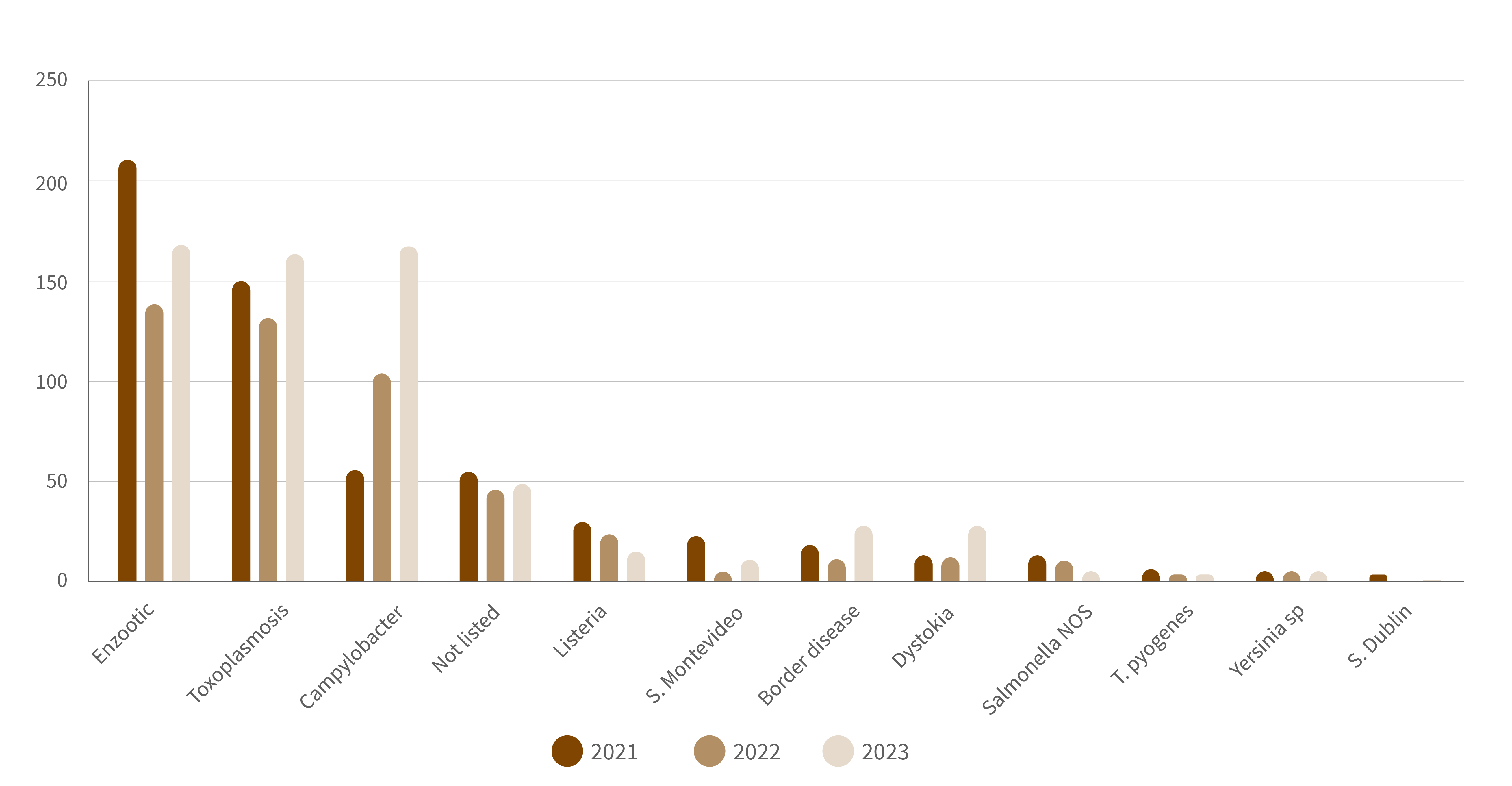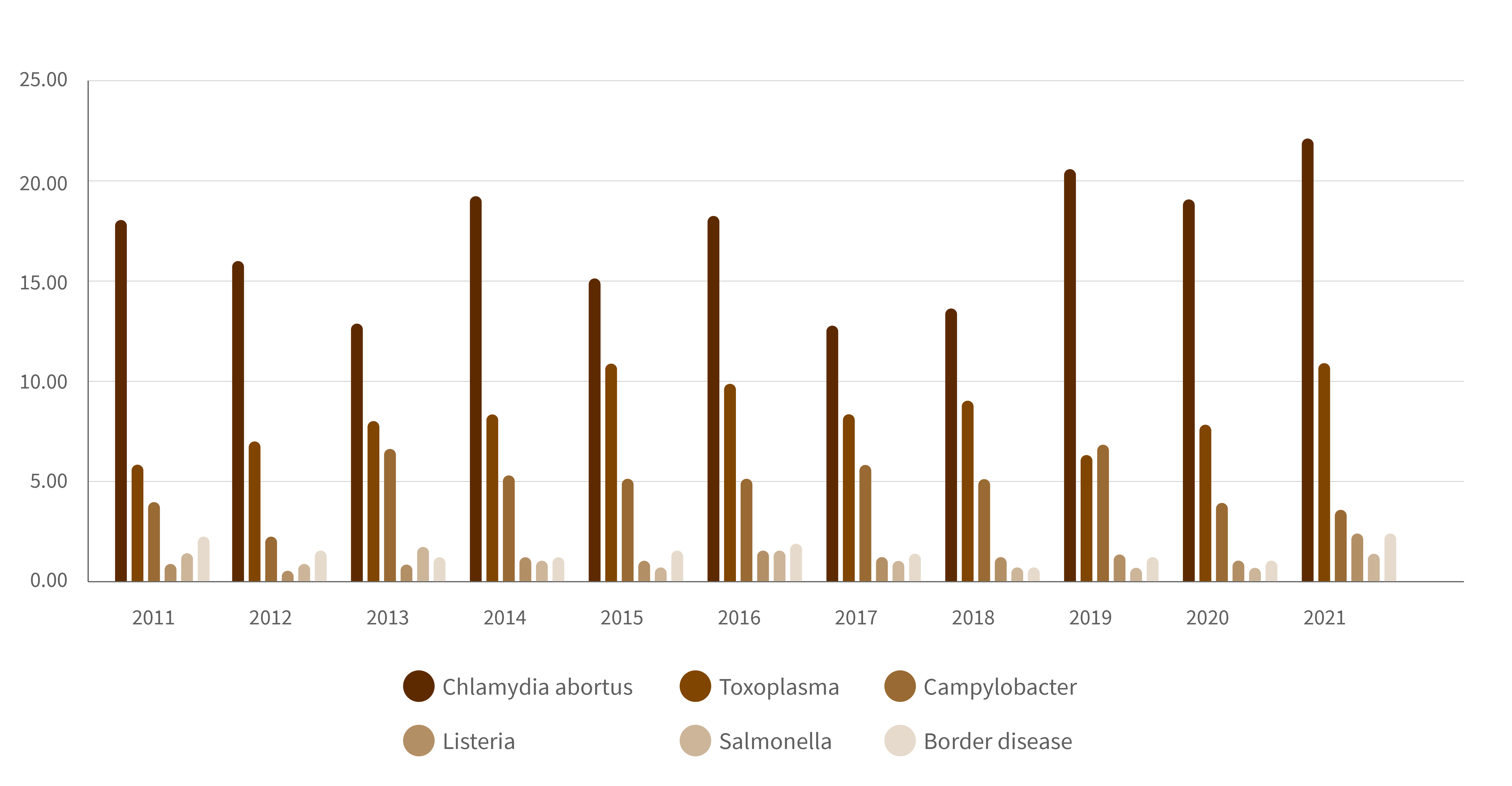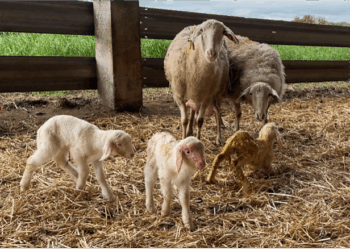The United Kingdom is the largest lamb producer in Europe. One of the main problems producers have to deal with is abortions. Numerous prevalence studies indicate that the main cause is Chlamydia abortus, so control and prevention of this infection is essential for the country’s sheep sector.
What do we know about OEA in the UK?
We need to look at the quarterly Great Britain small ruminant disease surveillance and emerging threats reports. These reports contain disease data collected by the Animal and Plant Health Agency (APHA), Scotland’s Rural College (SRUC) Veterinary Services division and associated post-mortem providers and Small Ruminant Species Expertise networks.
Thanks to these reports, we have detailed data on the prevalence of pathogens causing abortions in sheep.
Enzootic abortion causes losses of around £20M a year (Milne et al., 2009), although in 2005 the cost was estimated to be as high as £48M (Bennett R. 2005).
What do the data show?
The latest data on abortion causes in the UK was published in the report for the last quarter of 2023, comparing them with data from 2022 and 2021;
600 diagnoses were made during the delivery period, from January to June 2023. The results show that Chlamydia abortus is the main cause of abortions in sheep.

Ovine enzootic abortion was the most common diagnosis in the years 2021, 2022 and 2023
If we look back in time and review the data over several years, we see that Chlamydia abortus is always the most relevant pathogen.

These data show the impact of OEA in the British sheep sector and why it is crucial to prevent and control it.
What can we do?
It has been proven that the most effective way to control C. abortus infection is vaccination of the flock. Vaccines can reduce reproductive problems and also prevent the circulation of the pathogen by reducing its excretion.
Additionally, inactivated vaccines against C. abortus offer an extra advantage: their safety. This is the case of INMEVA® (HIPRA), which has demonstrated its safety and efficacy when administered to pregnant animals.

Looking at UK vaccination data, in 2022, 44.1% of all breedingewes, including ewes intended for breeding for the first time, were vaccinated against OEA.
Although there was a notable reduction compared to the previous year, there has been an overall increase since 2013, when only one in three sheep was vaccinated against OEA.
Conclusions
OEA is a major threat to UK sheep farms, severely affecting their profitability.
To effectively control this disease and reduce its impact, it is essential to continue implementing and promoting vaccination.
It is necessary to strictly follow the established vaccination protocols to achieve the best results.
The INMEVA® vaccine has demonstrated its effectiveness in controlling OEA in flocks re-vaccinated annually.
Article written by:
Tania Perálvarez Puerta. Global Product Manager, Small Ruminants Franchise – HIPRA
References:
https://ahdb.org.uk/knowledge-library/abortion-vaccines-in-sheep




